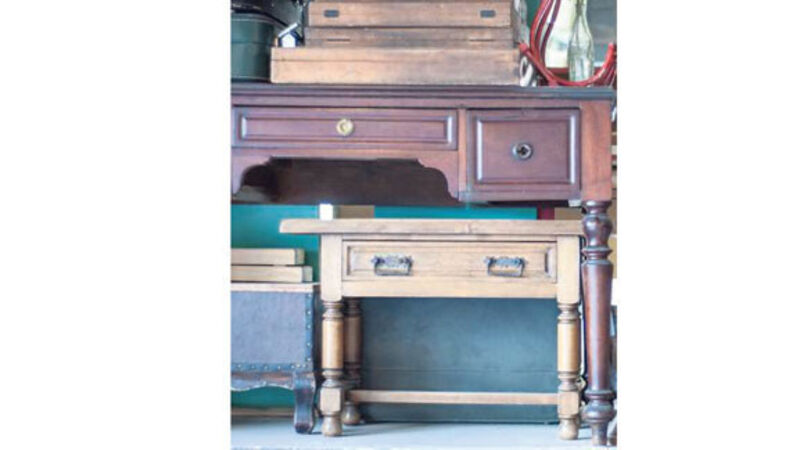Vintage view: Selling goods at auction and online

We all have a gang of aged trespassers holding up valuable space at home: that obese, Victorian mahogany wardrobe with the missing plinth and mousy smell to the lining; that fragile and redundant Noritake tea-set, sitting open-mouthed on the bookcase, swallowing every gulp of dust. The relationship is over.
The first, stolen glance that made your heart jig and your wallet flower — a distant memory. Shake off the inertia that’s keeping these lost loves at your side. There are several options.
First of all, do your homework. Ensure you’re not clattering a slab of rare Tiffany glass down to the local boot sale.
If you’re not sure what you have, look into it online (image searches on Google are quick and easy, leading you to price and dealer pages), or consult a reputable antiques dealer.
The dealer may take a nicer item on commission, leaving you with a potentially healthy profit, if you can wait out a sale. You will be given an educated opinion on what it may realise at auction, but for something unusual, or of obvious quality, do the research, and settle on a reserve price with which you are happy.
The auction route, selling directly to, or placing something on commission with, a dealer physically removes the piece from the house.
This might seem like a worrying loss of control, but if you’ve chosen the right firm or individual it can save you enormous trouble and, more to the point, stages your antique in a buyer-rich environment.
Yes, you may only realise a wholesale-style price on the sale day, or by paying a 15-20% commission, but having strangers call, text, and breach the ramparts is not for the faint-hearted.
If you live alone, it’s intelligent to have someone bigger and more stoic with you, someone with a bit of ‘the knowledge’ when potential purchasers call. Even if they seemed like sugar-coated Disney characters on the telephone — be wary.
In my experience, individuals on the prowl for antiques and collectables can be an unsettling nuisance, eyeing up more than what’s on offer and fastening on the suggestion of tea you only extended in a polite Celtic reflex.
In the worst instances, you’ve invited a seasoned reptile in the door, who will give you a long, disappointed lecture on the failings of your piece, before doing you a Christian favour by taking it (or something else they spotted out of the corner of their eye), off your hands.
Selling at an online auction site, such as Ebay, at least removes this immediate human element, but it puts the onus back on you to represent your item as honestly and completely as you can.
This may require you to admit that you don’t know much about it. Take photographs showing any damage, wear or peculiarities, and upload these with your listing. You may be asked by bidders for more pictures or information, as distance buying is always a bit of a gamble.
Determine, ahead of time, just how you will deliver the item to the winning bidder and the cost, to them if they are not organising their own courier.
If the piece is ‘as described’, you should have no need to take it back, but consider what you would do if asked to do so. Stay within the protection of the host website, by communicating only via their messaging service, which will appear in your email.
In this way, you have a paper trail if the piece is not paid for, or you receive any troublesome behaviour after the sale. Conflicts can damage your reputation as a seller, which is annoying if you regularly use these sites for fun or business.
Established used-furniture dealers are always looking for interesting stock, but it’s demented to demand the same prices from a general household outlet that you would expect at an antiques and collectables fair.
For larger items of nondescript vintage and baldly second-hand furniture and ornaments, this kind of release can be a godsend. Generally, the cavalry comes with a muscle, a van and free collection in the area local to the shop.
Gather up as much as you can for the owner to look at, before the van or lorry arrives, and be keenly aware of what you’re letting go.
Don’t pick some knocker out of the classifieds who is ‘looking for old stuff in sheds’. Visit the premises, discuss your needs face-to-face, and ensure you feel comfortable doing business with the staff.
More pricey pieces may, again, be taken only on commission, which is fair enough as true antiques may be outside their target market.
Finally, at the risk of rolling eyes and visible winces, always ask your immediate family if they would like a crack at something you’re releasing to the retail ether.
Get this wrong and your failings will be the stuff of tribal legend — ‘remember when you flogged that heirloom, Mammy’?













